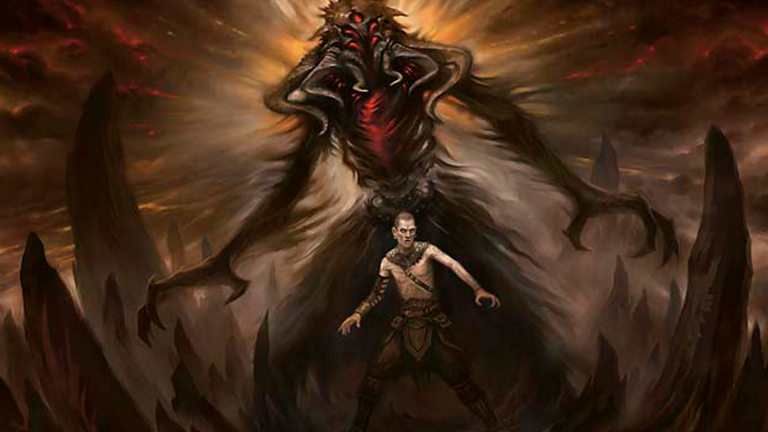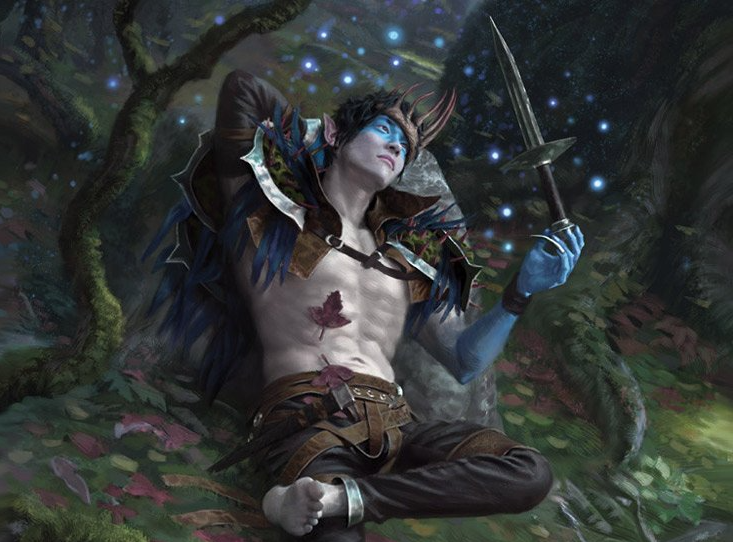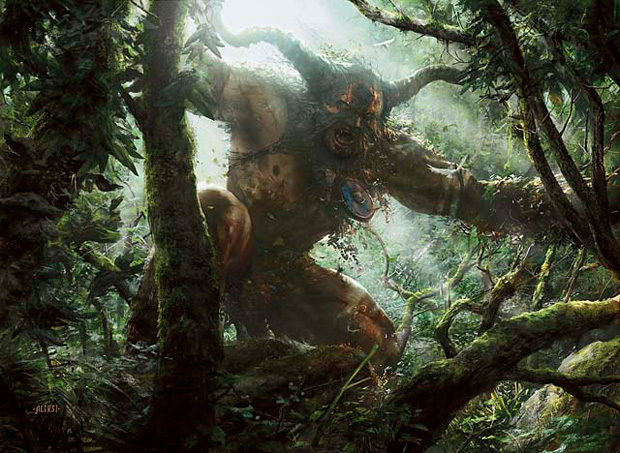Today, Urchin Colley returns to offer some insight on the latest Modern tournament results.
It seems as though every other word spoken on Modern lately has related to the Urza decks that have been rapidly taking over tournaments. Since Emry, Lurker of the Loch arrived, innovation with Mox Opal has exploded. These decks have rocketed to the top of the metagame, demanding that you come prepared with strategies to beat them.
The Modern Open players at SCG Indianapolis this weekend did just that. Though very popular, only one Outcome deck found its way into the Top 8. This is quite a turnaround from the success that it saw at the Philadelphia Team Open one week prior.
Let’s tackle the big questions. What is going on with the Urza decks this week? What decks are holding up against them? What strategies should you employ to fight them, and, if you’re on Team Artifice, how do you adapt?
Opal & Amber
The midrange Whirza deck with Thopter Foundry and Sword of the Meek has been a known quantity for a while now. Not seeing significant upgrades from Throne of Eldraine, this archetype has dropped off in popularity in favor of Urza Outcome.
The Outcome decks have added varying numbers of Emry, Lurker of the Loch to find more explosive starts and incorporate additional sources of value. Since she was released, the presence of this deck has exploded. Second and sometimes tertiary color choices usually vary between Black, Green, and White, and sideboard construction significantly distinguishes builds.
| (15) 1 Disdainful Stroke 2 Fatal Push 1 Mystical Dispute 1 Veil of Summer 2 Narset, Parter of Veils 3 Oko, Thief of Crowns 2 Collective Brutality 2 Thoughtseize |
| (15) 1 Fatal Push 2 Mystical Dispute 2 Veil of Summer 3 Oko, Thief of Crowns 2 Tezzeret, Agent of Bolas 3 Collective Brutality 1 Dead of Winter |
| (15) 1 Galvanic Blast 2 Mystical Dispute 2 Stoic Rebuttal 2 Weather the Storm 1 Narset, Parter of Veils 3 Oko, Thief of Crowns 2 Whipflare |
Beyond that, this weekend saw the emergence of an Outcome deck at SCG Indy that incorporated Jeskai Ascendancy alongside Urza, Lord High Artificer and Paradoxical Outcome. This new variation builds in an insta-win with Emry and the namesake enchantment. Just add a Mishra’s Bauble, and the Ascendancy-Outcome deck can loot indefinitely, and make an arbitrarily large Loch Lady for the kill.
No Bauble? No worries. Two Moxen function just as well, with infinite mana as a bonus. Should this combo not come together, you can still fall back on the Paradoxical Outcome plan. On the face of it, this variation trades some consistency and manabase stability for a chance at some lightning-quick wins, which matter a lot in Outcome’s weaker matchups. It remains to be seen if these Ascendancy builds are better than the prior wave of Outcome decks, but they’re certainly being put to the test.
The development space around these Urza decks is diverse and shifting incredibly quickly. I would not be surprised if some of the next things attempted left the Lord High Artificer himself out entirely. Already at the fringes, you can find Emry appearing in artifact-based Modern Kethis, the Hidden Hand combo decks that are Urza-free.
Evolution is happening at breakneck speed, so beating these decks is a tall order.
The Victors
Going into the Modern Open at SCG Indianapolis this weekend, Urza Outcome was accused of being broken. Many Modern players were (still) crying for a Mox Opal banning. At the very least, Outcome was the deck to beat. However, whilst it dominated the Modern seat in the Top 8 of the Team Open at Philadelphia (3 copies), it largely failed to climb to the top at Indianapolis.
Outcome was still very well-represented in Day 2, though. If you combine all of the Urza variants that made Day 2, they account for more than double the next-best represented deck. It’s safe to assume that anyone who climbed to the Top 8 had to fight through a lot of Mox Opals!
Despite its conversion rate, only one Outcome deck, an Ascendancy build piloted by Oliver Tomajko, made Top 8.
Oliver Tomajko's Ascendancy-Outcome
Tomajko was eliminated in the quarter finals. What happened?
Undesired Outcomes
First of all, Amulet Titan performed very well at Indianapolis. Two Amulet players made Top 8, the only archetype with more than one copy to get in. Furthermore, if you actually split up the Urza variants, it was the best-represented deck in Day 2. Given that it’s a notoriously difficult-to-pilot archetype, and not something that many players are willing to pick up on a whim, this is a significant result.
Why does Amulet beat up on Outcome? It comes down to the fact that Outcome typically has only four Engineered Explosives for interaction game one, and can only lightly board into more. EE is not incredibly effective against Amulet, and the majority of Outcome players have been opting for Fatal Push as their sideboard removal of choice. One of the most punishing hate pieces against Amulet, Damping Sphere, is totally unplayable by Outcome due to its taxing ability.
All things said and done, Amulet has its own Explosives (which are much more punishing in the other direction), its Titans are not chump blockable, and it’s often a faster combo deck. The strength of the Urza Outcome deck is in its resilience to hate, not its speed. In most matchups, it aims to block with tokens in order to survive until it can completely turn the game. This leaves it quite soft to decks that don’t bother interacting, and who are relatively unimpeded by 1/1s.
Winning the Race
Know what else is a faster combo deck? The winning deck of SCG Indianapolis: Gifts Storm. Drake Sasser took down Tomajko with this classic deck. It’s a very difficult matchup for Outcome; winning typically requires a lucky die roll and a fast hand. Sideboarding can improve things significantly if the right cards are available.
Burn isn’t an easy one for Outcome either, to be honest. Game one is nearly unwinnable if the Burn player finds an Eidolon of the Great Revel, as the little devil is effectively a four-of hate piece that Burn runs maindeck. Outcome’s blockers won’t come down fast enough to stop a substantial amount of ground damage, and Lightning Bolts to the face are often lights out. There are sideboard options in all the Abzan colors to support Outcome against Burn—including Collective Brutality, Weather the Storm, and Sunbeam Spellbomb—but it’s still an uphill (fire)fight.

Death’s Shadow decks aren’t impossible, but their combination of hand disruption, targeted removal, and quick, trampling finishes can take down Outcome, especially on its brittler draws. Fatal Push leaves it substantially less vulnerable to the Ascendancy version than decks who can’t remove Emry while she’s summoning sick. I doubt it was an accident that Jund Shadow was the highest-placing Shadow variant at Indy. It’s the fastest-closing of the common Shadow decks, silencing Outcome before it can recover from some early trade offs.
Beating Outcome, then, requires faster combo, with a strong balance of the right early interaction and fast closing speed. Or, hilariously, Merfolk.
Despite these poorer matchups, the best thing about Urza Outcome, I think, is how hard it is to hose. When you’re looking to beat it, stop trying to find the right silver bullets. A Damping Sphere certainly doesn’t hurt, but the deck that’s punishing Outcome the hardest right now can’t even run it. If there’s one lesson to learn from Indy, it’s to beat Outcome with a coherent and proactive strategy, not a reactive approach from the sideboard.
Innovations on the Horizon
If you’ve picked up this deck recently and are a little perturbed by recent outcomes, how do you adjust from here? Well, the good news is, the deck is not solved, and I wouldn’t be surprised to see variations separate and develop in different directions.
More exploration is definitely required. Personally, I’m not excited about the Ascendancy variant. The Ascendancy combo is hurt by graveyard hate, and its Paradoxical Outcome plan is weaker due to lower artifact density. It runs a lot more high-cost colored spells that can clog the hand, and Ascendancy is not great when it’s not abruptly winning the game.
The clunky manabase also prevents you from capitalizing on Mystic Sanctuary, which I think is the strongest card that Eldraine brought to the pure Outcome deck. Despite those issues, there are powerful, distinctive ideas in Ascendancy Outcome. I am excited to see it continue developing, and what it will be able to do with further refinement.
Back in Bant
As for pure Outcome, I think the sideboard will be what makes or breaks the deck based on changes from event to event. Black is the most popular sideboard color for Outcome, but Autumn Burchett brought a Bant build to Indy. They went 11-4 and had positive things to say about their sideboard choices.
Autumn was very happy with the white cards in their board. Path to Exile took out Gurmag Angler and Primeval Titan, while Fatal Push could not. Though weaker in the mirror than Push, having a leg up against Amulet and Shadow was important at Indy. Autumn credited their multiple Monastery Mentor and Rest in Peace with contributing to game wins.

Oko, Thief of Crowns, Burchett said, is extremely strong and gives their build a better midrange plan than the deck typically has. They were uncertain if Oko outweighs the benefits of running black, which offers Collective Brutality, a very effective card against Burn. There’s also the possible merits of a Path/Push split which could be very strong.
Back to the Grinding Station
The next build I want to try looks something like this:
Urchin's Brew
The lack of Emry is not an accident, but that’s an entire discussion on its own.
One thing is for sure, though: I wouldn’t play this deck without White right now. I think Modern players have been Resting a little too Peacefully since the banning of Faithless Looting. Emry is blank without a graveyard. The up-and-coming Mystic Sanctuary control decks are absolutely hamstrung when both players are yardless. In Autumn’s feature match against Sam Black’s Mystic Sultai deck, Rest in Peace was a must-answer that ran away with the game when it resolved. With Rest in Peace available against Storm, you can buy a significant amount of time. The same can be said of how it weakens Shadow, especially delirium-focused variants. Don’t sleep on your Rests. Not in Outcome, and not in general.

There’s so much available going forward in this space. I expect continuing dramatic shifts, and I’m very interested in seeing what happens as control decks return to Modern with their new focus on Mystic Sanctuary. Maybe with Storm’s victory and the resurgence of Amulet, the Titan killers will return. And who knows, maybe Aether Vials won’t be so absent either.

